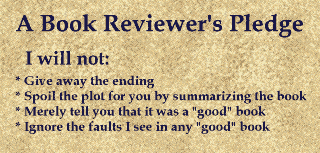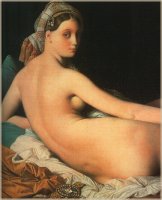

Maia by Richard Adams (1984)
| Note: Maia
is the "prequel" to Shardik by British author Richard
Adams, who is best known for his first novel, Watership
Down (which was made into a successful "mature audiences"
animated film).
Free Advice: When you buy this book, don't read the blurbs on the back. It's a 1200 page book, so be assured that the folks who write the copy on the back of paperbacks have not read the book. Ergo, everything on the back of the book may be totally wrong, not to mention prejudicial. I've owned two copies of this book—and the first 30 pages fall out, guaranteed. So if you acquire a pristine paperback copy, protect it with book tape or a second homemade paper cover. If you find Maia in hardcover, let me know, I'd love a hardback copy. Fantasy: Maia is not fantasy per se, but it does have fantasy elements you'd find in classic novels (like Jane Eyre): bigass coincidences, prophetic dreams, sleight of hand, and "evil" places. For fantasy readers: the world of Maia is very much like ours; a few extra animals are added (you may notice that one animal is conspicuously absent: horses), and the constellations are different. For everyone else: it seems a little far-fetched that the tropical rainforest climate of the Beklan Empire can exist bordered by deserts on every side.
Narrative: The world of Maia is very richly imagined, and the descriptive passages transport the reader to a world of sensory delights. I have read this book aloud to a companion, and I must add that Adams' sentence is far too long to be spoken in one breath. Remember not to turn blue! Maia is a bit of a racy book, but Adams makes adept use of euphemism to cloak the raunchier episodes. In fact, he coins new words to replace most four-letter words, in the same way as he names the "new" animals and plants in his imagined world. A caution to non-fantasy fans: you will have to remember a lot of "weird" names (the List of Characters at the beginning helps) and learn a lot of Beklan words during your reading . Using genteel language to describe X-rated action is a feat in itself, and Adams seeds the narrative with his own ideas about sexuality. The book is anti-SM, but it deals with some SM feelings in a natural manner. Also, Maia is at least superficially gay-positive. Though the word "girl" applies to women of up to 24 years of age (as in "men and girls"), feel assured that this ain't no John Norman space slave yarn. In terms of "love interest," I felt that the true love affair in the book lacked the punch of some of its more trivial dalliances. The reader is left in doubt as to why they fell in love in the first place. A little "willing suspension of disbelief" may be required.
Maia remains one of my favourite books, and I've read it several times over in the past twelve years. There are some characters shared with Shardik, so it's interesting to read that book as well, to see how everyone ends up. Enjoy! Once you've read Maia, email me and I'd love to talk about it! |
Additional bibliography:
 Image
Credits:
Image
Credits:
French Orientalist paintings by Jean-August Dominique Ingrès from C Jackson's fabulous fine art collection:
© March 11, 1998. Back.